Arizona Wild Flowers
Pictures, Photos, Images
Descriptions, Information, Reviews.
Spiny Sowthistle, Sonchus asper.
We Are Proud Of Our SafeSurf Rating!
Click On Any Of The Following Links By Amazon.Com
For Books, & Videos About Wildflowers Of Arizona & The Southwest USA. No Obligation!
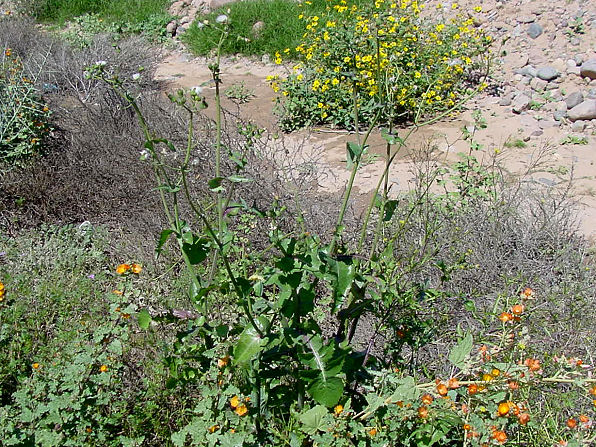 |
| Spiny Sowthistle, Sonchus asper. |
|---|
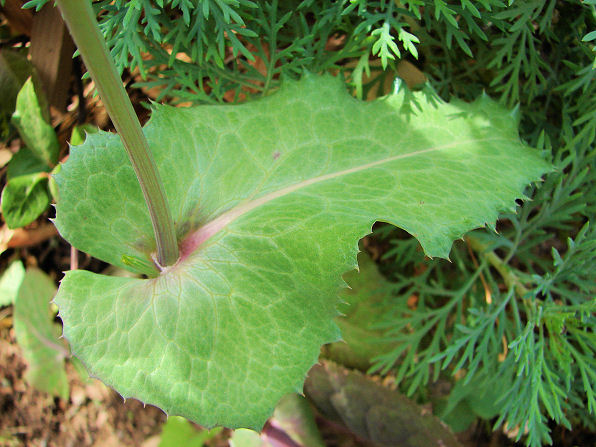 |
| Spiny Sowthistle, Sonchus asper; Basal Lobes, Well - Rounded. |
|---|
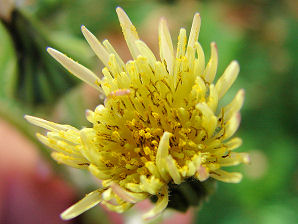 | |
| Spiny Sowthistle Close Up. | Spiny Sowthistle Close Up. |
|---|---|
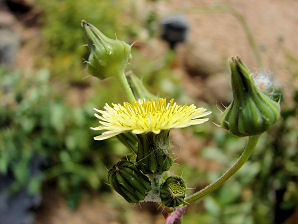 | 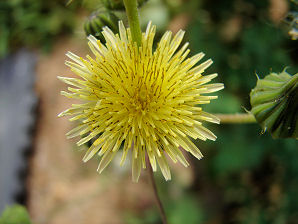 |
| Spiny Sowthistle Close Up. | Spiny Sowthistle Close Up. |
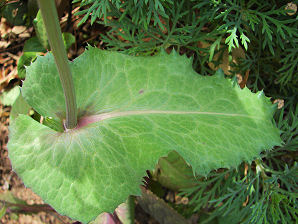 | 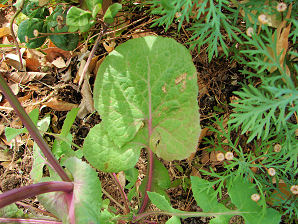 |
| Spiny Sowthistle Basal Lobes, Well - Rounded. | Prickly Sowthistle Basal Lobes, Well - Rounded. |
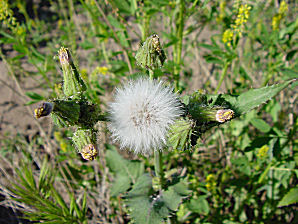 | 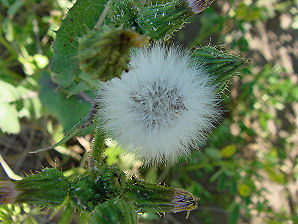 |
| Spiny Sowthistle "Cotton Like" Seed Pod. | Spiny Sowthistle, Seed Pod Wind Blows Seeds Everywhere! |
Spiny Sowthistle.
We wish to thank Wikipedia, the free encyclopedia for some of the information on this page. We share images and information with Wikipedia. In general, the genus of Sonchus is a non-native herbaceous annual plant, which can reach about 60 inches in height. It appears to now be located worldwide. There are about 60 species of Sonchus, native to Eurasia and tropical Africa. There are two species of Sowthistle, which are all considered noxious weeds, in Arizona. One species is Sonchus asper ( Spiny or Prickly Sowthistle ). Another is Sonchus oleraceus ( Common or Annual Sowthistle ). There is a third Sowthistle, which is Sonchus arvensis ( Field Sowthistle or Perennial Sowthistle ), that grows in states surrounding Arizona, which could be found in isolated areas of Arizona. All of the Sowthistle species are common weeds growing in the urban areas of the deserts of Arizona. In general the plants germinate from seed in the early spring and are in full bloom by mid March. But, they can bloom year round. Sowthistle are quite tolerant of the heat and some can survive through the summer. Their yellow inflorescence is usually open briefly for one day and then only at dawn. When the seeds form they are located on a puffy white ball shaped seedhead. Then a dandelion - like pappus at the top of each small seed allows them to be easilly distributed by the wind or the brushing of the seedhead by a passing animal. The leaf shape of the Spiny or as otherwise known Prickly Sowthistle, is very similar to that of the dandelion's of Arizona as well. However, Sowthistle grows much taller and branches more freely whereas, the dandelion's leaves are all basal and the flowering stalk is unbranched. In the Phoenix area, the very first seedlings start to appear in about Mid - December. Usually by Mid - January many young plants are beginning to grow and become a problem to landscaping. By Mid - February the plants are growing very rapidly. Their growth rates are very much influenced by the amount of winter and spring rain. The more rain, the greater the growth. By the summer most of these plants will have dried up. But, some will survive, grow, and bloom throughout the year. Spiny Sowthistle is somewhat variable in appearance because its leaves may be either lobed or unlobed along the margins. This can cause confusion when trying to identify the different species of Sowthistle in Arizona. Sonchus asper ( Spiny or Prickly Sowthistle ) and Sonchus oleraceus ( Common or Annual Sowthistle ) can be distinguished from each other by the shape of the basal lobes of the leaves: the basal lobes of Spiny Sowthistle are well-rounded, while the basal lobes of Common Sowthistle are acutely angular. Common Sowthistle has dull green foliage with pairs of pointed lobes at the base of each leaf. Spiny Sowthistle has shiny green foliage with pairs of rounded lobes at the base of each leaf. Also, the leaves of Common Sowthistle are more deeply lobed and triangular-shaped than the leaves of Prickly Sowthistle. Both, Spiny Sowthistle and Common Sowthistle have smaller composite flowers that are 3/4" across or less. Field Sowthistle or Perennial Sowthistle on the other hand is a perennial plant with spreading rhizomes and composite flowers that are 1" - 2" across. In addition, the lobes at the base of its leaves are small and rounded. Also, the leaf margins of Spiny Sowthistle are much more spiny or prickly than those of Common Sowthistle.
Quick Notes:
Height: Up to about 60 inches. Spreading out to about 48 inches wide.
Flowers: Yellow, hemispherical, approximately 1/8" to 3/4" in diameter.
Seeds: Seeds, which are, on average, 3mm long by 2 mm wide, are equipped with a small parachute of hairs, that can carry them over large distances in strong winds.
Flowering Time: Mid February - May.
Leaves: Leaves are alternate. Each leaf is stiff, shiny, toothed and sometimes lobed. The leaves clasp the stem. Leaves of Spiny Sowthistle are glossy - green in color.
Found: All of North America except northern Canada.
Hardiness:
Soil pH requirements:
Sun Exposure:
Elevation: 0 - 8,000 Feet.
Habitat: Alkaline, well-drained/light soils. Washes in the desert environs, Irrigated fields, moist fallow fields, cracks in pavement, roadsides. Found throughout lower elevations in Arizona.
Miscellaneous: Flowering Photos Taken March 21, 2003. Glendale, Arizona.
|
We Are Proud Of Our SafeSurf Rating!
Click On Any Of The Following Links By Amazon.Com
For Books, & Videos About Wildflowers Of Arizona & The Southwest USA. No Obligation!
| © 1966 - Present, Audrey, Eve, & George DeLange |